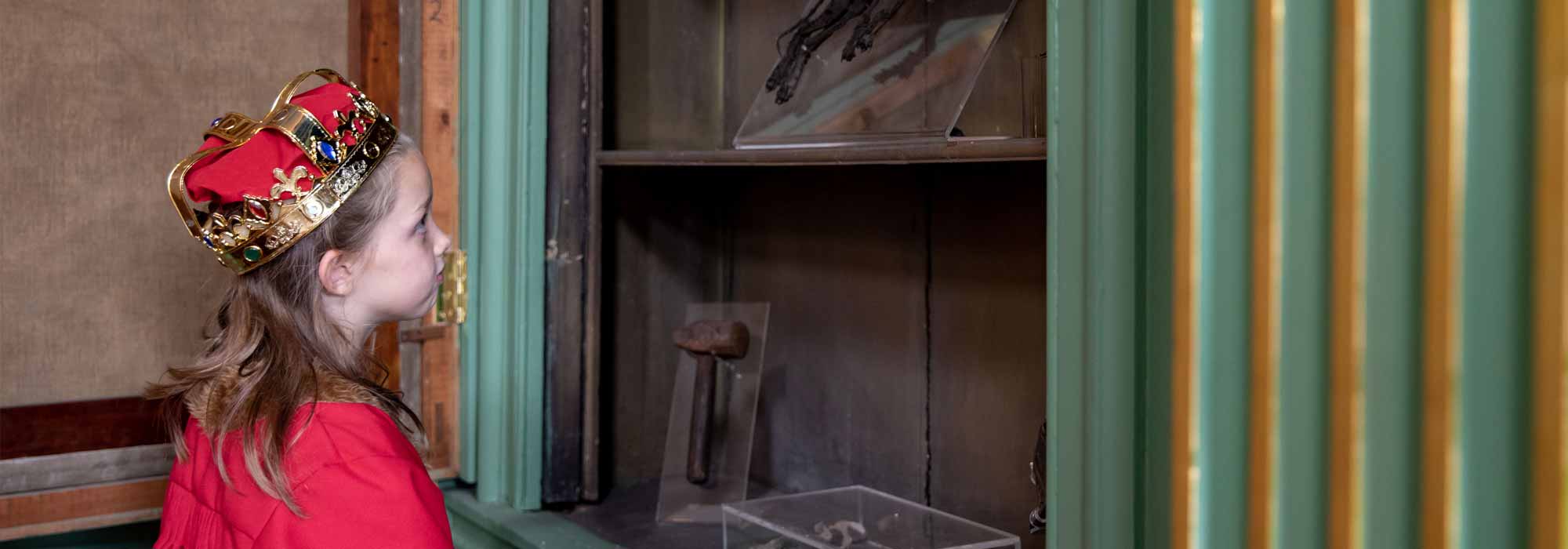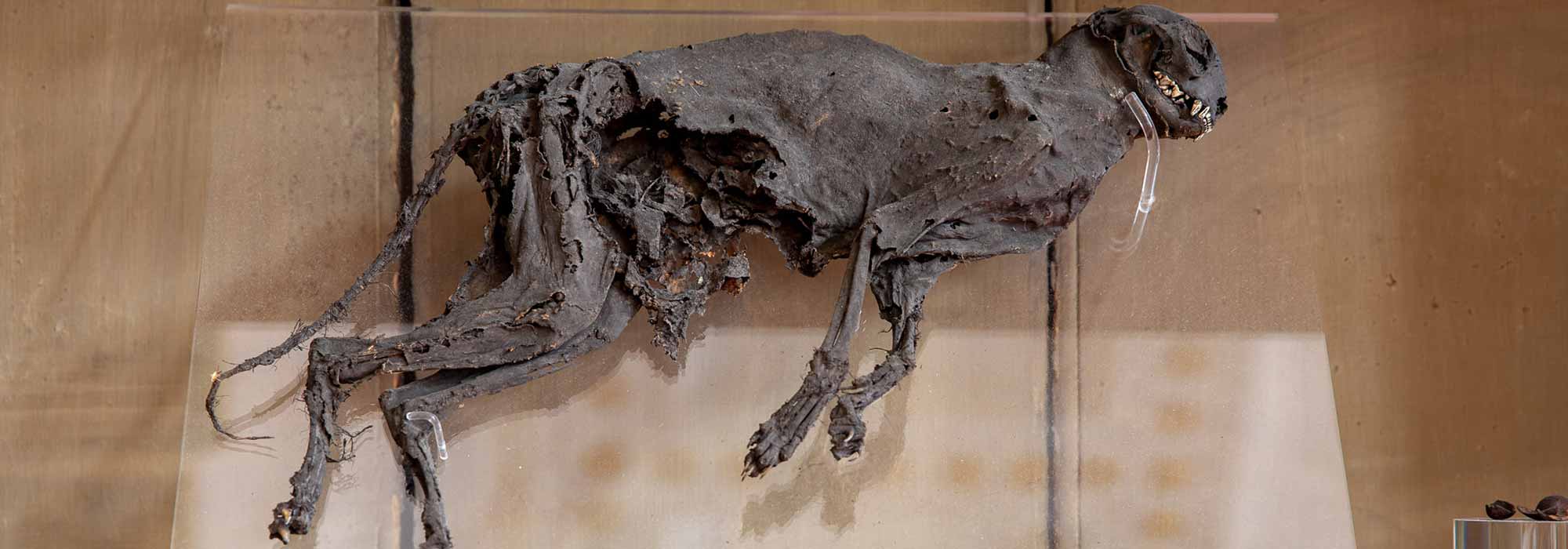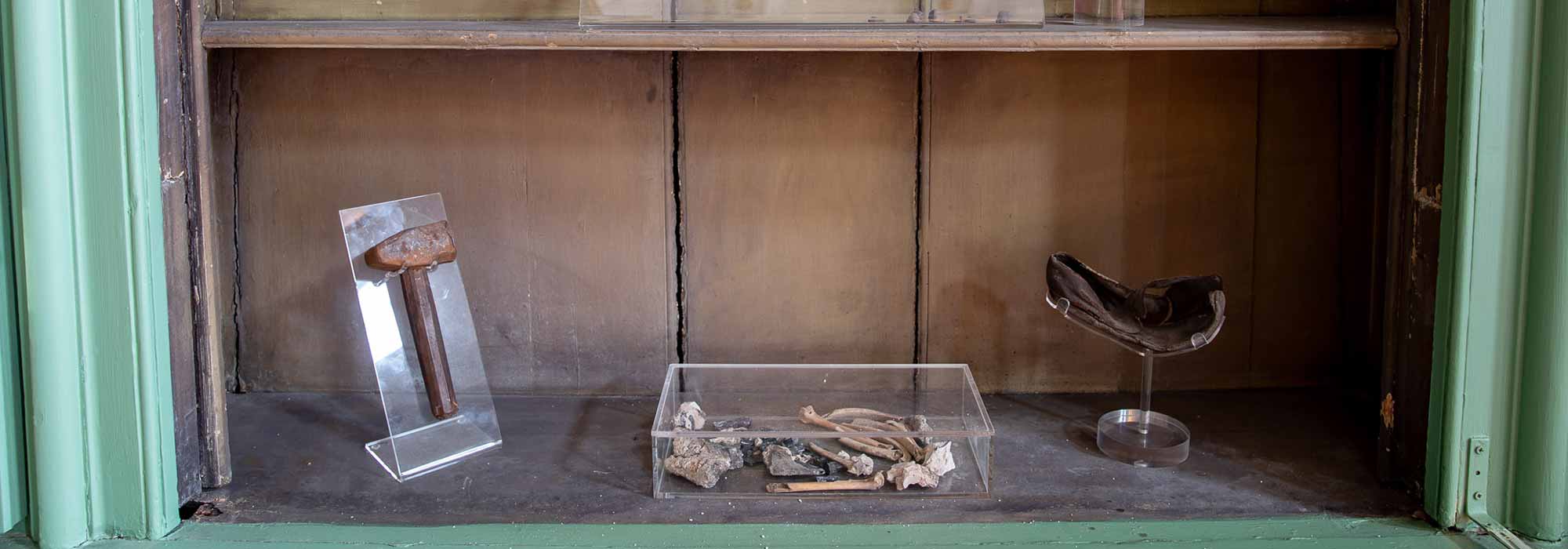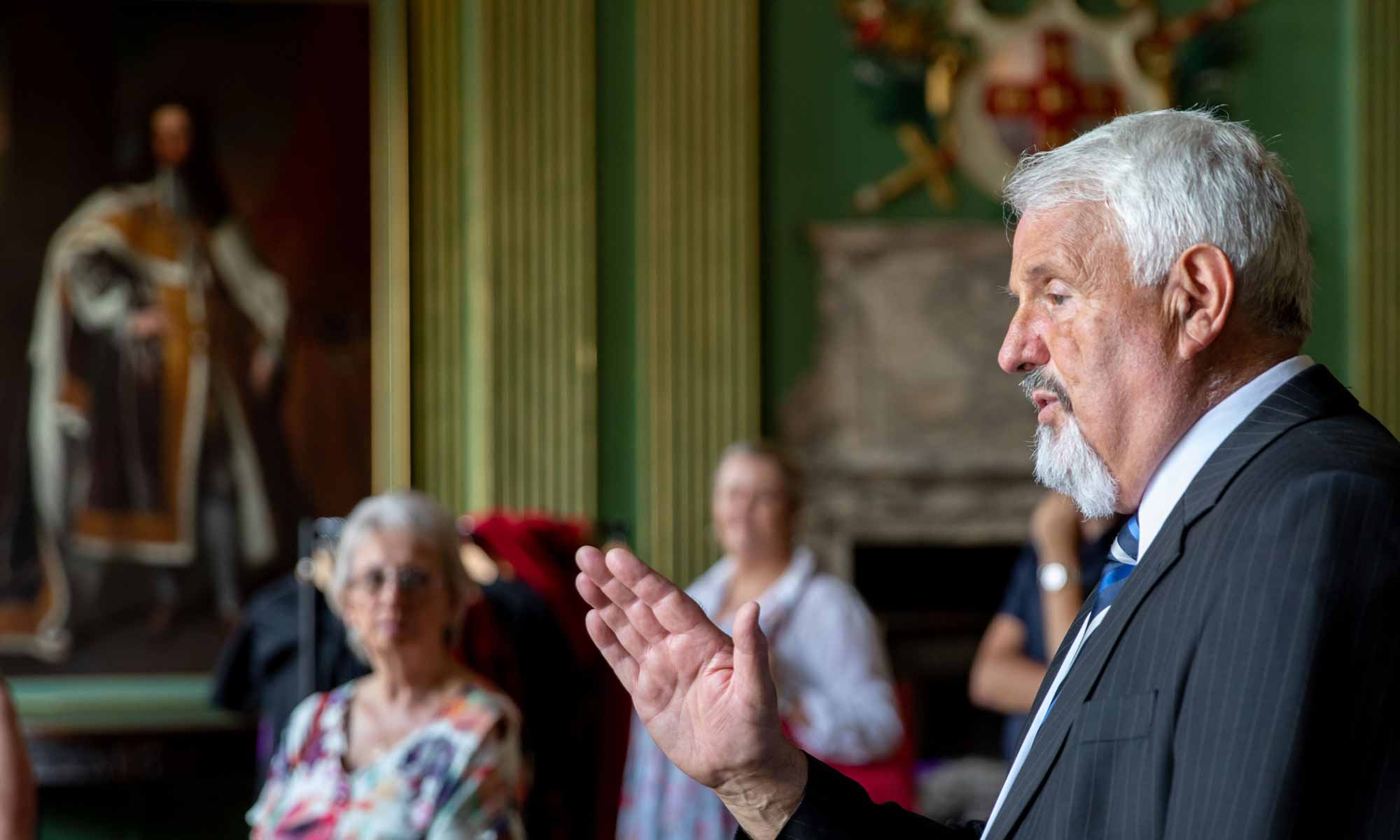Cabinet of Curiosities
The Cabinet of Curiosities

During the restoration of the house, the walls and floors revealed a number of long-hidden secrets. With so many people living and working in the house throughout the centuries, it’s no surprise that some traces of human life, and human superstition, remain to this day.
The Mummified Cat

One of the most surprising finds was this perfectly preserved cat, found hidden beneath the floor of the upper rooms – now the Lord Mayor's apartment, but once home to domestic staff.
We aren’t sure of the cat’s origins, though it’s likely it was placed in the house in the 1830s, when these floors were first used for staff. Perhaps most interestingly, the cat was found surrounded by hazelnut shells and deliberately concealed, an old practice designed to protect the house from evil.
During the restoration, the cat was thoroughly examined and it was determined that it died of natural causes – it wasn’t deliberately killed for this practice. It’s now proudly on display in the house where it continues to be on guard.
The Shoe

While an unexpected find, a leather shoe, concealed in a wall, is quite commonly found in older houses. Likely to be a good luck symbol, people believed that sacrificing something valuable to the house – like a single leather shoe, which was expensive and rendered the other shoe unusable, would give them all protection.
The ladies shoe, which has been heavily repaired, probably dates to the late 18th century, and was found in a rubble layer on the 3rd floor of the house. It now is on display next to the cat, see if you can find it.
Bones and Glass

This assemblage of bones, bottle and goblet glass came to light during the first phase or restoration, and was found concealed in a cavity within a basement wall.
The debris, deliberately assembled and hidden, reflects a traditional ‘topping out’ ceremony of the builders. This would have been common during the 18th century, and shows a pride of work and a desire to be remembered.
Graffiti
As with many old buildings, builders and residents alike have left their marks more tangibly than shoes and broken bottles. The Mansion House is no different, and we have found inscriptions of names, dates and good luck symbols dating at the earliest from 1726 throughout the building and on the lead of the roof.
This practice didn’t end in the 18th century. Look close enough and you’ll see modern day marks from our most recent restoration…

